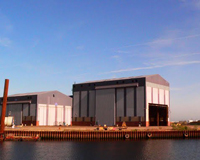Graham Brown, joint head of industrial, Savills
Despite the challenging climate, pockets of opportunity exist in the UK within the industrial and logistics sector which developers are beginning to recognise and capitalise on.
Strategic speculative industrial development in the UK has been moribund since the financial collapse of 2007, and while the overall development rate of the country is unlikely to pick up overnight, the sector continues to witness sustained demand for additional space from occupiers faced with lease termination, consolidation, merger and expansion or opportunity factors. AG Barr agreeing a 265,000 sq ft design and build at Gazeley’s Magna Park is a clear example of this, as is Jaguar Land Rover’s deal with Prologis to occupy 166,000 sq ft at Fort Logistics Centre in Birmingham. Next, H&M and Amazon are among others looking for space.
This demand has led to the absorption of much of the prime vacant space in certain parts of the country, particularly in the Midlands and South East, and consequently there is an acute shortage of available space. In these areas it is expected that demand will lead to a number of “build-to-suit” schemes as this emerges as the only option to satisfy certain occupiers in certain localities.
Fortunately, developers such as Prologis, SEGRO, Gazeley, Goodman and Roxhill are sitting on strategic land banks with existing planning, which will allow them to respond to enquiries on a design-and-build basis without taking risks.
Generally, the increasing shortage of quality stock will tend to favour landlord-developers, who will insist on economic viability in return for development and investment risks.
While short-term leases at concessionary rentals have been in vogue for occupiers taking existing space in the depressed market, harder deals and longer leases can generally to be expected, especially where large bespoke buildings are required.
Meanwhile, there are also opportunities for smaller units within busy premier locations such as west and north-west London and the south Midlands. Historically, the 5,000-50,000 sq ft sector has operated on a system of speculative built stock that is let following completion. However, this speculative nature has been hard hit by the economic downturn. The exception to this is west/north-west London and the south Midlands, where there is a severe shortage of quality stock and tangible evidence of occupier enquiries, in turn creating encouraging potential for future development. A well-known example is the Goya/SWIP 160,000 sq ft Central Park development at Park Royal, NW10, which is under construction. A design-and-build/prelet on part of a site may be the catalyst for triggering speculative development on the adjoining land where economics of scale can be engineered.











